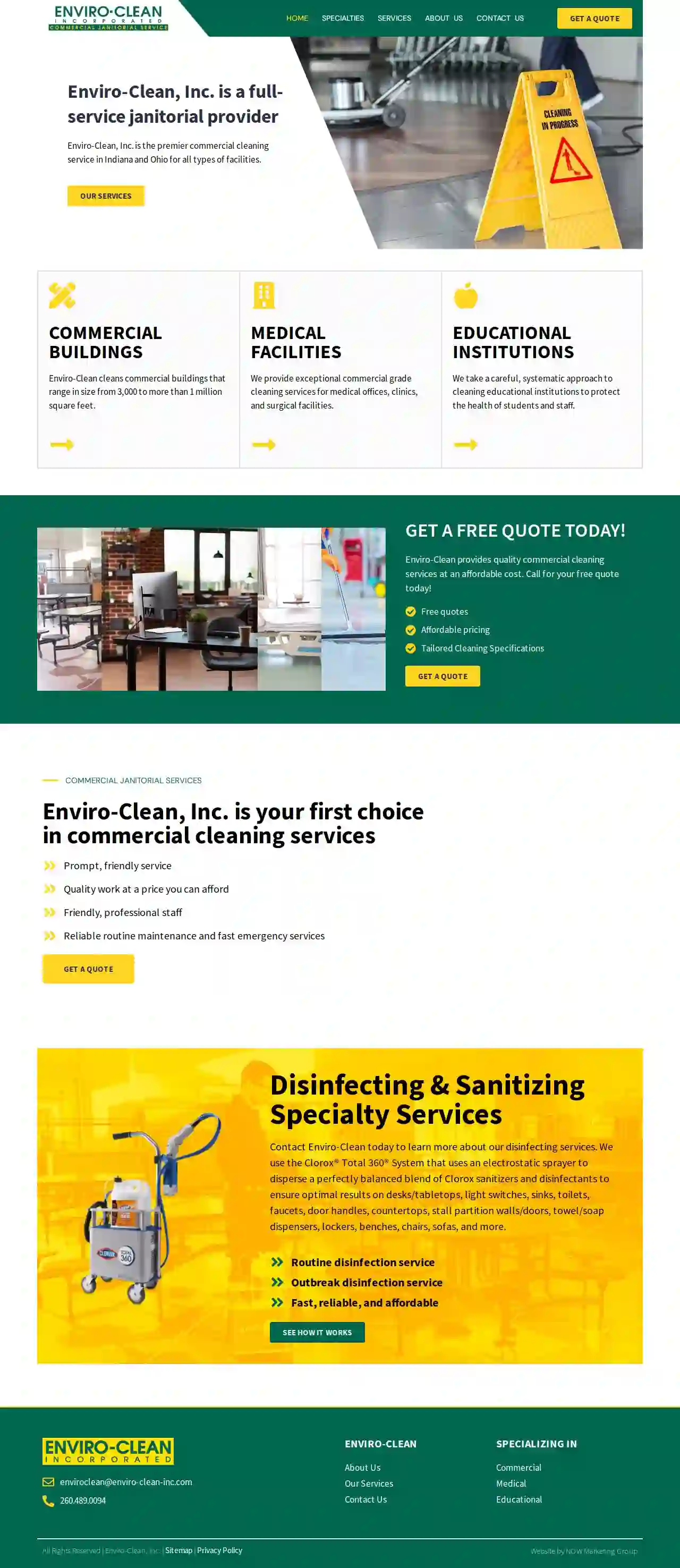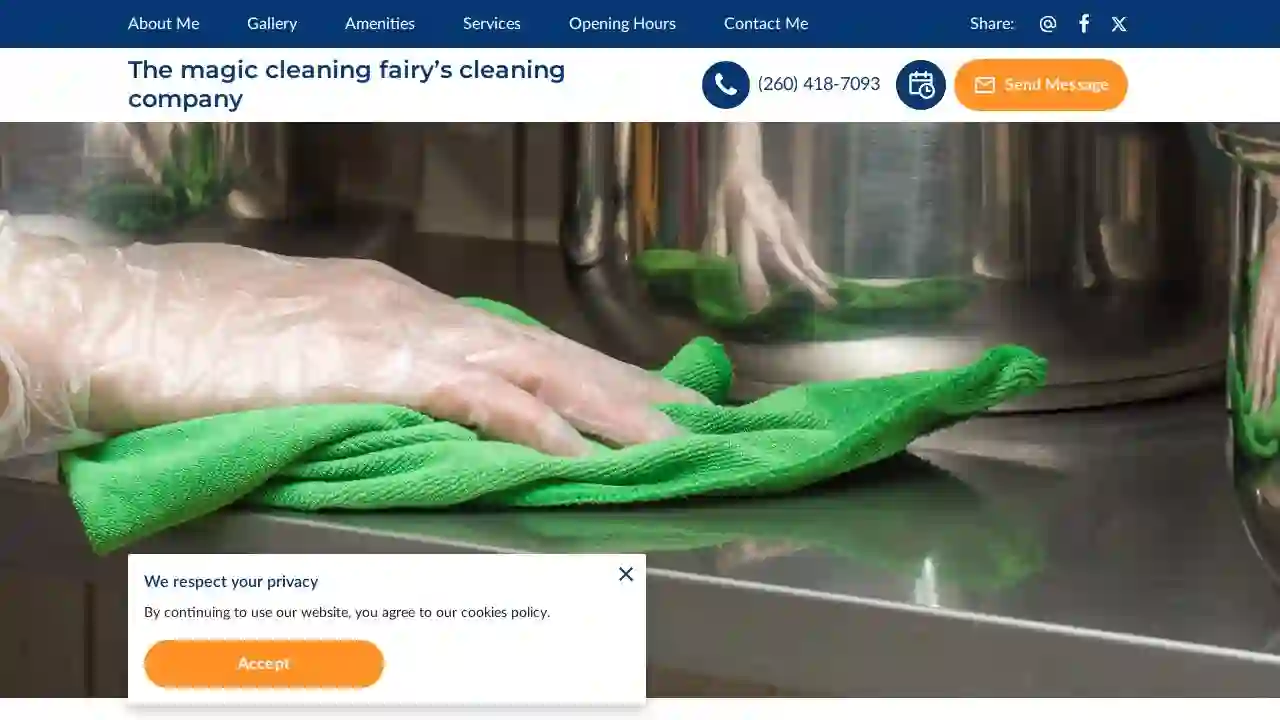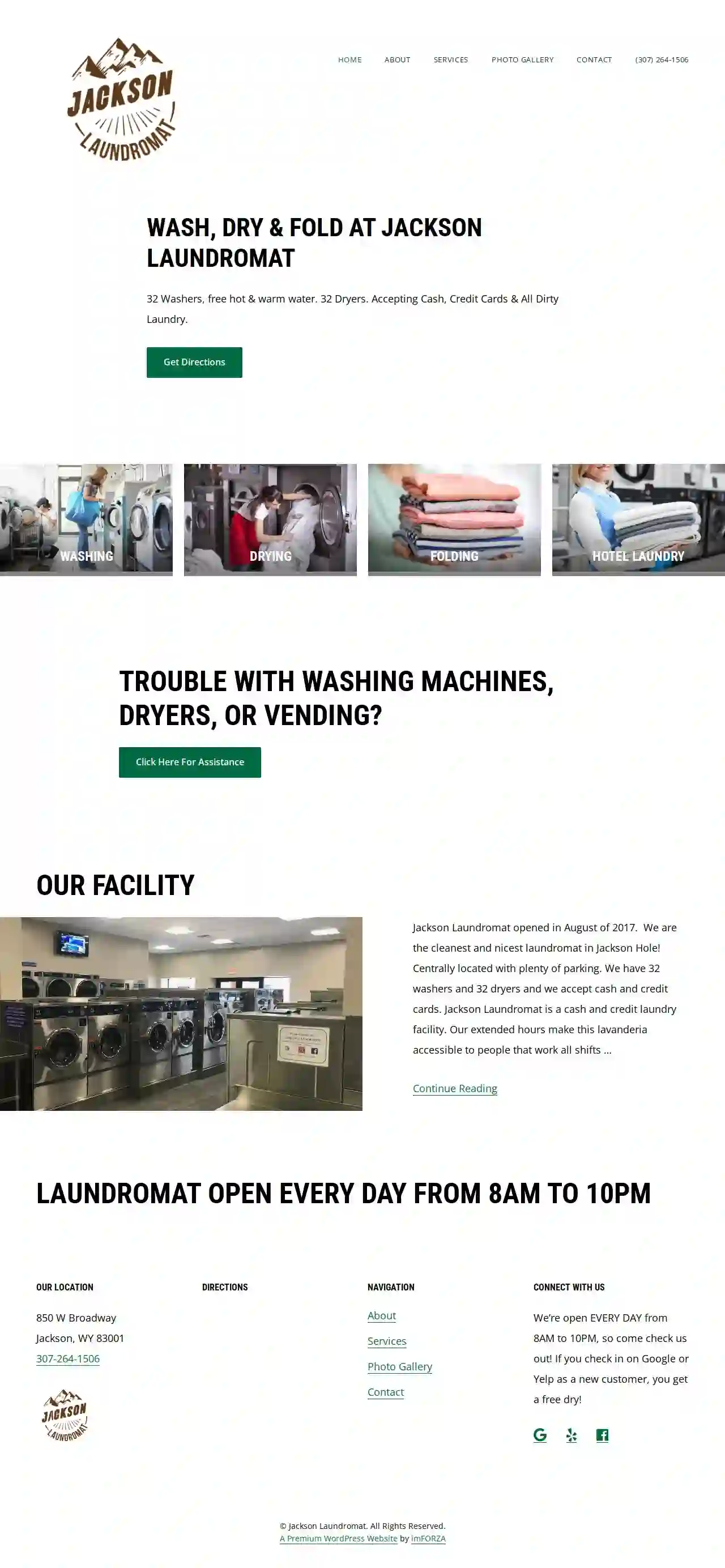Cleaning Services Delaware
Find Apartment Cleaning in Delaware
Receive multiple House Cleaning quotes for your project today! Compare profiles, reviews, accreditations, portfolio, etc... and choose the best deal.

Enviro-Clean Inc
2.824 reviewsWayne, US- Services
- Why Us?
- Gallery
Get Quote
The magic cleaning fairy’s cleaning company
Fort Wayne, USAt The Magic Cleaning Fairy's Cleaning Company, we take the hassle out of cleaning. No matter the size of your home, our trained domestic cleaners work to the highest standard and will leave it sparkling. Located in Fort Wayne, we also offer a range of specialist cleaning services, including end of tenancy cleaning, after party cleaning, and carpet cleaning. Call us today on +1 260 418 7093 to discuss your cleaning requirements. Ready for some shine? Our specialist team of trained cleaners are ready at short notice, to visit your property and address your cleaning requirements. We pride ourselves on using industry-leading products and techniques to leave your home or office sparkling. Whether you're seeking end of tenancy cleaning or after party cleaning, we guarantee a rapid and efficient service, leaving you free to do other things. Take a look at our list of cleaning solutions now and choose the right option for your property.
- Services
- Why Us?
Get Quote
American Laundromat of Jersey City
4.4151 reviewsJersey City, US- Services
- Why Us?
- Gallery
Get Quote
Zurc Scouring Solutions
514 reviewsJersey City, US- Services
- Why Us?
- Gallery
Get Quote
Jackson Laundromat
4.3222 reviewsJackson, US- Services
- Why Us?
- Gallery
Get Quote
Gulf South Janitorial LLC
522 reviewsJackson, US- Services
- Why Us?
- Gallery
Get Quote
Office Pride Commercial Cleaning Services of Fort Wayne-Auburn
513 reviewsWayne, US- Services
- Why Us?
- Gallery
Get Quote
Commercial & House Cleaning Fair Lawn
53 reviewsPaterson, USZhanna's Cleaning Services is a professional cleaning company serving New Jersey and New York. We offer a comprehensive range of cleaning services, including residential, commercial, Airbnb, floor, window, and post-construction cleaning. Our team of experienced cleaners is dedicated to providing high-quality, reliable, and customized cleaning solutions to meet the unique needs of each client. We pride ourselves on our integrity, trustworthiness, objectivity, expertise, and commitment to building long-term relationships with our customers. With over 10 years of experience in the industry, we have a proven track record of delivering exceptional cleaning results. Our team utilizes advanced techniques and industry knowledge to ensure that every job is completed to the highest standards. We are fully accountable for our work and strive to exceed client expectations. At Zhanna's Cleaning Services, we understand that your time is valuable. That's why we offer flexible scheduling options and competitive pricing to make our services accessible to everyone. We are committed to providing a stress-free cleaning experience, allowing you to focus on what matters most.
- Services
- Why Us?
- Gallery
Get Quote
Cleaning Services
4.824 reviewsWayne, US- Services
- Why Us?
- Gallery
Get Quote
Best Office Cleaning
56 reviewsJersey City, US- Services
- Why Us?
- Gallery
Get Quote
Over 60,241+ Cleaning Services registered
Our janitorial service providers operate in Delaware and beyond!
CleaningMatch has curated and vetted the Best Janitorial Services in Delaware. Find a top & trustworthy contractor today.
Frequently Asked Questions About Cleaning Services
- Online Directories: Use online directories like CleaningMatch to search for cleaning services in your area. Filter your search results by the specific cleaning type you need.
- Search Engines: Use search engines like Google to find cleaning services specializing in your desired cleaning type. For example, search for 'post-construction cleaning services near me' or 'eco-friendly cleaning services in [city name].'
- Ask for Referrals: Ask friends, family, neighbors, or colleagues if they know of any reputable cleaning services specializing in your desired cleaning type.
- Check Company Websites: Visit the websites of cleaning services in your area to see if they list the specific cleaning type you need among their services.
- Contact Companies Directly: Contact cleaning companies directly to inquire about their specialization in your desired cleaning type.
- Cleaning: Removing dirt, dust, and debris from surfaces using soap or detergent and water. It improves the appearance and removes visible contaminants.
- Sanitizing: Reducing the number of bacteria on surfaces to a safe level. It uses chemical disinfectants or heat to kill or inactivate bacteria.
- Disinfecting: Killing or inactivating most disease-causing microorganisms on surfaces. It uses stronger chemical disinfectants than sanitizing and targets a wider range of pathogens.
- Experience and a proven track record: Choose companies with a solid history of providing quality cleaning services.
- Positive customer reviews and testimonials: Check online reviews and ratings to gauge customer satisfaction.
- Licensed and insured professionals: Ensure the company has the necessary licenses and insurance to protect you from liability.
- Clear and transparent pricing: Obtain detailed quotes and compare prices from multiple companies.
- Good communication and responsiveness: Choose a company that communicates clearly, responds promptly, and addresses your concerns.
- Prepare the Windows: Remove dust and debris from windows using a brush, vacuum, or damp cloth.
- Cleaning Solution: Use a commercial glass cleaner or a homemade solution of equal parts water and vinegar.
- Spray and Wipe: Spray the cleaning solution onto the window, ensuring even coverage.
- Squeegee Technique: Use a squeegee to wipe the cleaner from top to bottom, overlapping each stroke by about an inch. Wipe the squeegee blade clean after each stroke.
- Dry Edges: Wipe the edges of the window with a clean, dry microfiber cloth to remove any remaining moisture.
How do I find a cleaning service that specializes in [specific type of cleaning]?
By using these methods, you can find a qualified cleaning service that meets your specific cleaning needs.
What is the difference between cleaning, sanitizing, and disinfecting?
Cleaning is usually the first step, followed by sanitizing or disinfecting depending on the level of hygiene required.
How do I find a good cleaning service?
Utilize online directories like CleaningMatch to find and compare qualified cleaning services in your area.
What is the best way to clean windows without streaks?
For best results, clean windows on a cloudy day or in the shade to prevent the cleaning solution from drying too quickly and leaving streaks.
How do I find a cleaning service that specializes in [specific type of cleaning]?
- Online Directories: Use online directories like CleaningMatch to search for cleaning services in your area. Filter your search results by the specific cleaning type you need.
- Search Engines: Use search engines like Google to find cleaning services specializing in your desired cleaning type. For example, search for 'post-construction cleaning services near me' or 'eco-friendly cleaning services in [city name].'
- Ask for Referrals: Ask friends, family, neighbors, or colleagues if they know of any reputable cleaning services specializing in your desired cleaning type.
- Check Company Websites: Visit the websites of cleaning services in your area to see if they list the specific cleaning type you need among their services.
- Contact Companies Directly: Contact cleaning companies directly to inquire about their specialization in your desired cleaning type.
By using these methods, you can find a qualified cleaning service that meets your specific cleaning needs.
What is the difference between cleaning, sanitizing, and disinfecting?
- Cleaning: Removing dirt, dust, and debris from surfaces using soap or detergent and water. It improves the appearance and removes visible contaminants.
- Sanitizing: Reducing the number of bacteria on surfaces to a safe level. It uses chemical disinfectants or heat to kill or inactivate bacteria.
- Disinfecting: Killing or inactivating most disease-causing microorganisms on surfaces. It uses stronger chemical disinfectants than sanitizing and targets a wider range of pathogens.
Cleaning is usually the first step, followed by sanitizing or disinfecting depending on the level of hygiene required.
How do I find a good cleaning service?
- Experience and a proven track record: Choose companies with a solid history of providing quality cleaning services.
- Positive customer reviews and testimonials: Check online reviews and ratings to gauge customer satisfaction.
- Licensed and insured professionals: Ensure the company has the necessary licenses and insurance to protect you from liability.
- Clear and transparent pricing: Obtain detailed quotes and compare prices from multiple companies.
- Good communication and responsiveness: Choose a company that communicates clearly, responds promptly, and addresses your concerns.
Utilize online directories like CleaningMatch to find and compare qualified cleaning services in your area.
What is the best way to clean windows without streaks?
- Prepare the Windows: Remove dust and debris from windows using a brush, vacuum, or damp cloth.
- Cleaning Solution: Use a commercial glass cleaner or a homemade solution of equal parts water and vinegar.
- Spray and Wipe: Spray the cleaning solution onto the window, ensuring even coverage.
- Squeegee Technique: Use a squeegee to wipe the cleaner from top to bottom, overlapping each stroke by about an inch. Wipe the squeegee blade clean after each stroke.
- Dry Edges: Wipe the edges of the window with a clean, dry microfiber cloth to remove any remaining moisture.
For best results, clean windows on a cloudy day or in the shade to prevent the cleaning solution from drying too quickly and leaving streaks.